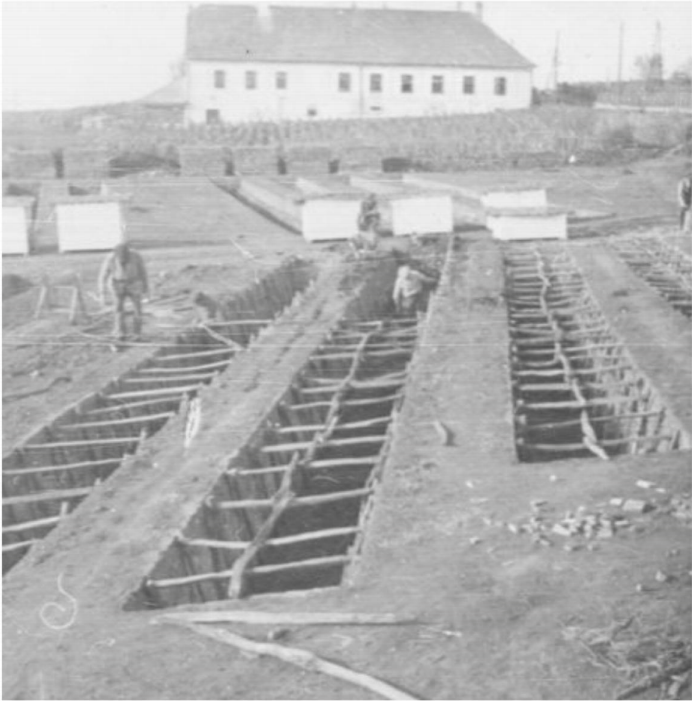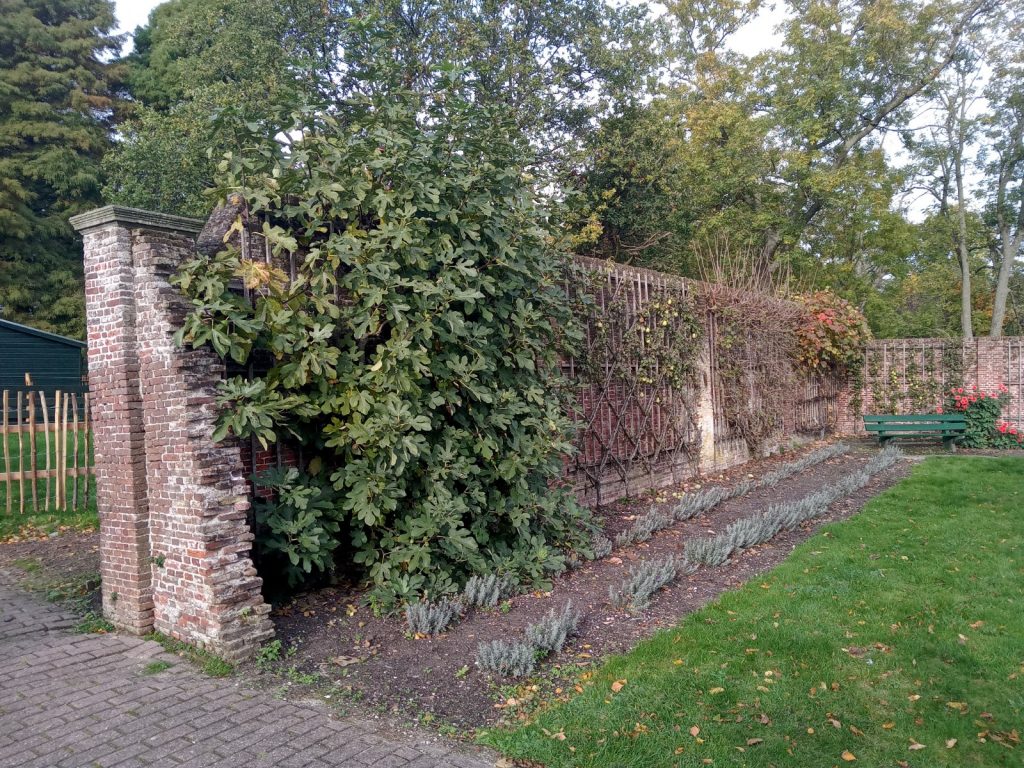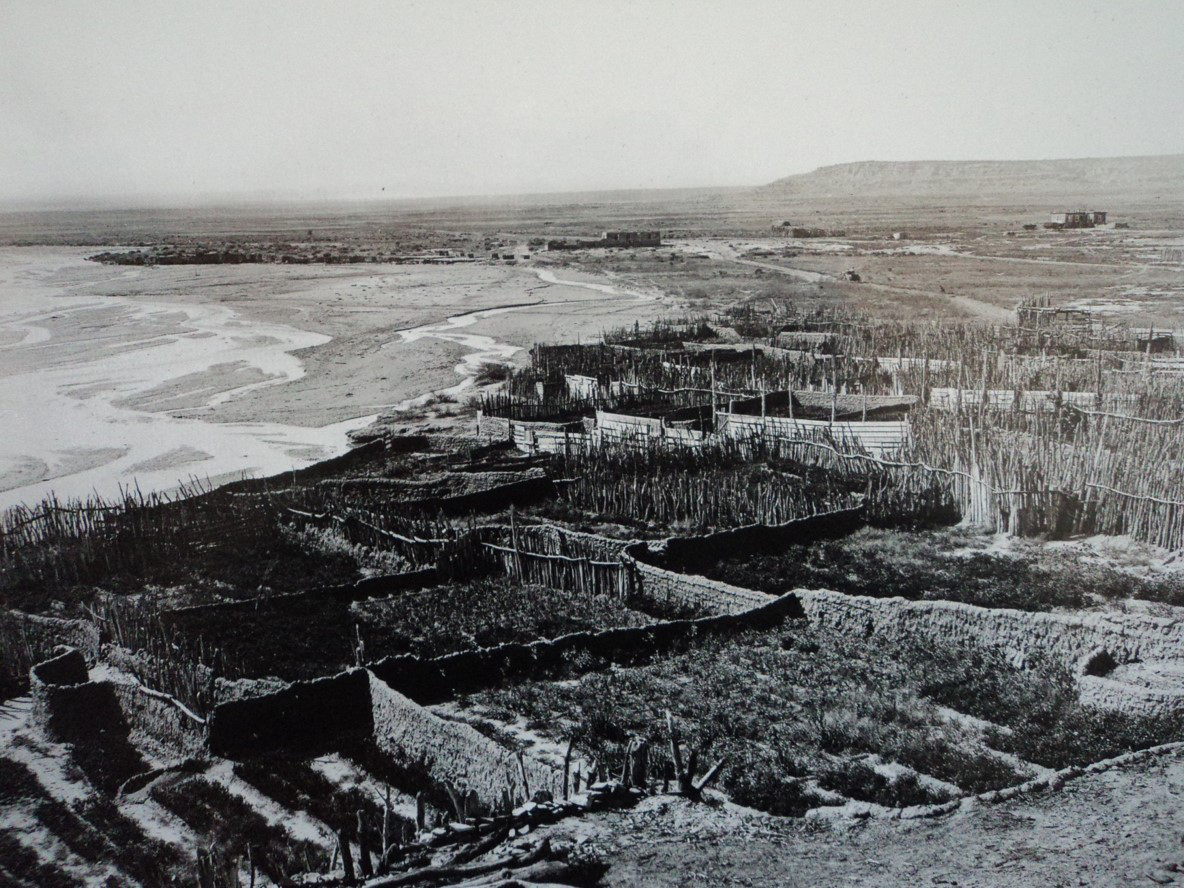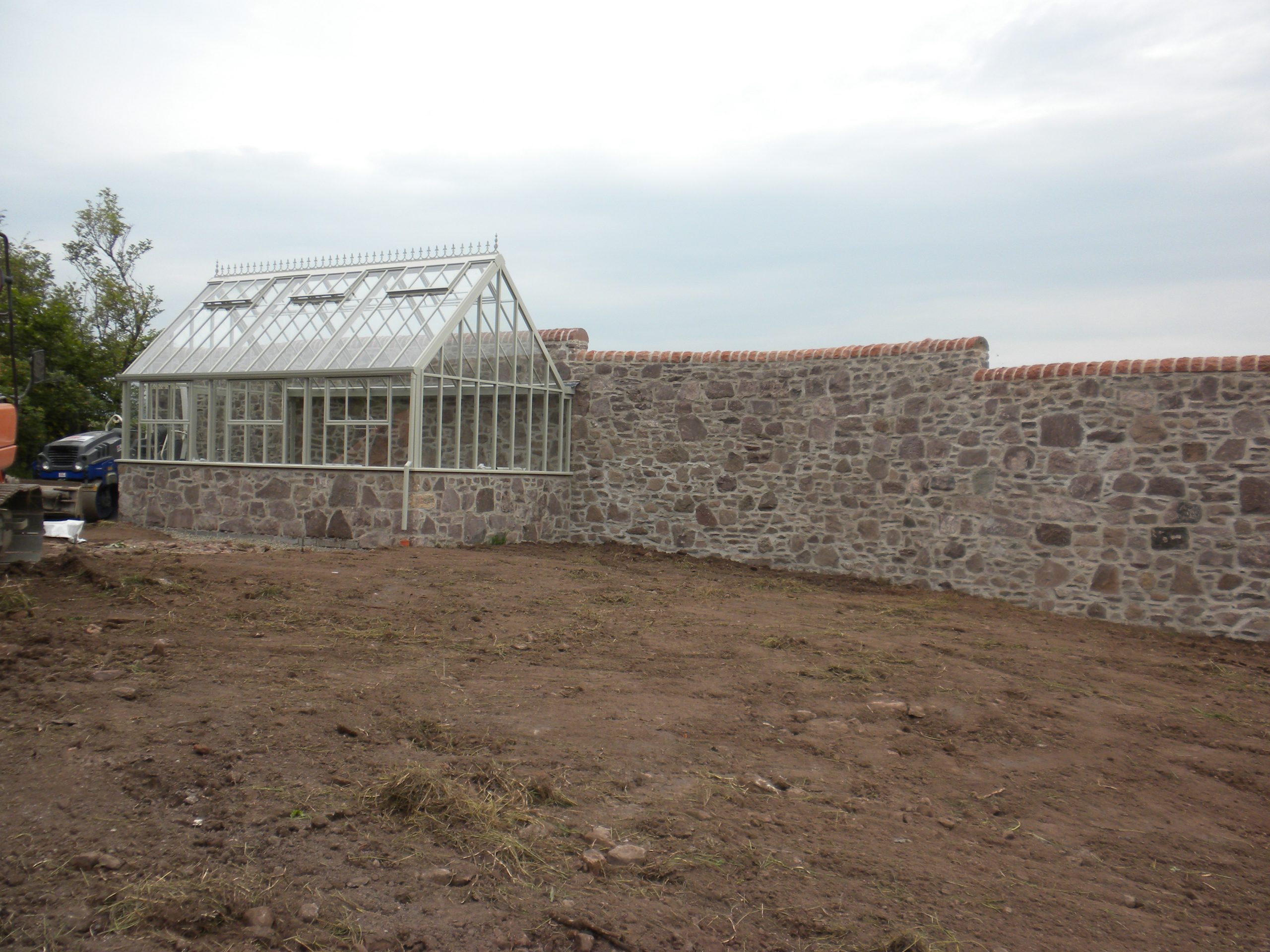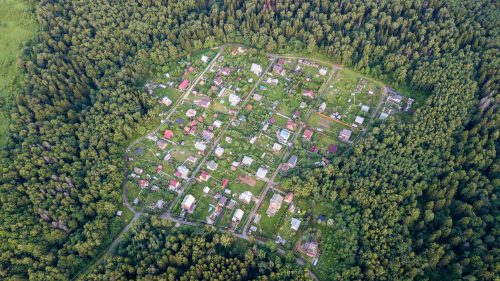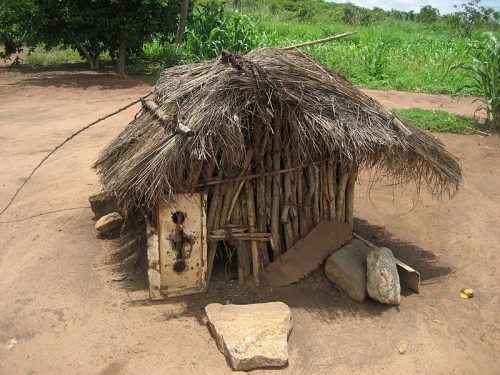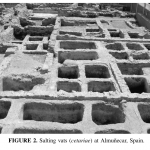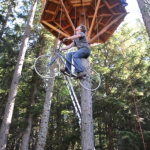Image: Works on Badacsony (Badacsony 1952). [Read more…]
Restored Fruit Wall in the Netherlands
Melle Smets, Dutch artist and our collaborator at the Human Power Plant, stumbled upon this beautiful fruit wall in Dorrepaal, the Netherlands. By planting fruit trees close to a specially built wall with high thermal mass and southern exposure, a microclimate is created that allows the cultivation of Mediterranean fruits in temperate climates. Previously: Fruit walls: urban farming in the 1600s.
Waffle Gardens
Historic Zuni waffle gardens, circa 1919. (Photo courtesy of Kirk Bemis)
For the past 64 years, Jim Enote has planted a waffle garden, sunken garden beds enclosed by clay-heavy walls that he learned to build from his grandmother. This year, he planted onions and chiles, which he waters from a nearby stream. It’s an Indigenous farming tradition suited for the semi-arid, high-altitude desert of the Zuni Pueblo in New Mexico, where waffle gardens have long flourished and Enote has farmed since childhood.
“They are the inverse of raised beds, and for an area where it is more arid, they’re actually very efficient at conserving water,” said Enote, who leads the Colorado Plateau Foundation to protect Indigenous land, traditions, and water. Each interior cell of the waffle covers about a square foot of land, just below ground-level, and the raised, mounded earthen walls are designed to help keep moisture in the soil.
Read more: The Resurgence of Waffle Gardens Is Helping Indigenous Farmers Grow Food with Less Water, Greta Moran, Civil Eats, October 2021.
Serpentine Fruit Wall in Scotland
Dear Kris,
I thought that you might be interested in the two photos that I attach and which were inspired by your 2015 article on Fruit walls.
A “Dacha” for Everyone? Community Gardens and Food Security in Russia
Russia’s large-scale peri-urban community agriculture has proven to be a very resilient food system. In this guest post, Arthur Grimonpont investigates the phenomenon and wonders if it could be reproduced in other industrial nations, for example in France.
Image: Dacha settlement, Kursk Oblast, by Petr Magera (CC BY 2.0).
“Diseconomies of Scale”: High-tech Versus Low-tech Supply of Eggs
Summarized from [paywall]: Trainer, T., A. Malik, and M. Lenzen. “A Comparison Between the Monetary, Resource and Energy Costs of the Conventional Industrial Supply Path and the “Simpler Way” Path for the Supply of Eggs.” Biophysical Economics and Resource Quality 4.3 (2019): 9.
Traditional housing for chickens in Zembe, Mozambique. By Ton Rulkens – Traditional housing 2, CC BY-SA 2.0.
Global sustainability requires large-scale reductions in rich world per capita resource use rates. Globalised, industrialised and commercialised supply paths involve high resource, energy, dollar and other costs. However, “The Simpler Way” involving small-scale integrated localised settlements and economies can enable enormous reductions in these costs. This study uses input–output analysis of one product, eggs, to illustrate how big the difference between the two paths can be. [Read more…]
